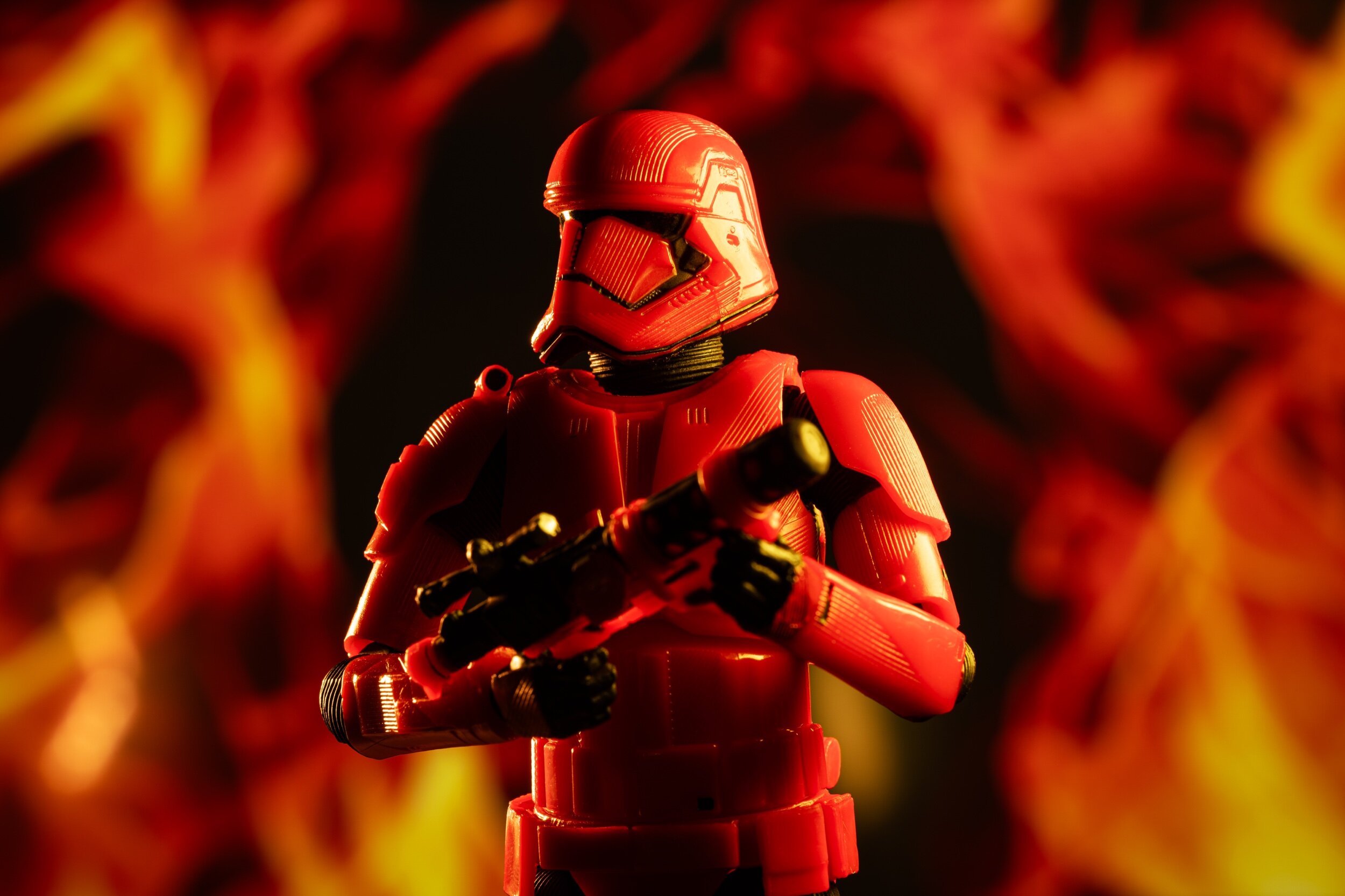It’s safe to say that photography is fundamentally 2 things; light and composition. Light is literally what bounces off objects in the scene and composition is where you place the camera to capture it.
What’s really amazing about shooting miniature scenes is that it becomes incredibly easy to experiment with the placement of everything since it’s all so small.
The Process
Below is a quick video showing the behind the scenes of the image above and below that is a video sharing a bit of my process on lighting a tricky glass image.
You can see in the second video how easy it was to just move the lights around until I got the results I wanted.
It’s probably obvious but in the first video with the Storm Trooper I was inspired by the production methods of The Mandalorian using the TV screen in back as “The Volume”; a virtual environment for interactive lighting and instant backdrop changes. The set isn’t perfect and the floor is just some foam core that doesn’t blend in at all but the concept has great promise. The key to everything, however, was matching the lighting on set. Here’s another example to illustrate that better.
So this photo is on the same exact set. I just swapped the background to a canyon image and moved the camera in closer. You can still see the floor ramming into the screen with no transition but it works, I guess.
Now go check out how I matched the light above. I used 3 very small wallet sized RGB LED lights (Aputure MC’s) to dial this in.
Looking through the viewfinder of my camera, I matched up the hue, saturation and luma values of the lights as well as the positions so that it matched seamlessly with backdrop image. Looking through the viewfinder was key since cameras see things differently from the way we do.
I used one light as the key on the upper-right side in a light lavender color, a very similar color in the lower left to act as a fill of the light bouncing off the ground, and finally I used a third light in the upper right behind the figure to act as the rim light and matched that with the yellow of the highlights in the image.
It’s not perfect but I was blown away at how well this actually worked! The human eye can be tricked pretty easily in certain circumstances.
Conclusion
I hope this brief article has shown you that working with miniatures is an amazing way to start playing with and learning lighting, composition, set design and more.
Not only is it easier to manipulate than full size sets, but it’s also cheaper to get into and can be done in your bedroom with a few simple tools. There is so much that can be done with these ideas.
I’ll leave you with some links to amazing toy photographers that are on a whole new level for you to take inspiration from.
Robert Day - 97 Parsecs Photography
And of course I have a thorough list of some amazing places online to learn photography here on my website.
Catcha in the next one!
Jeahn




